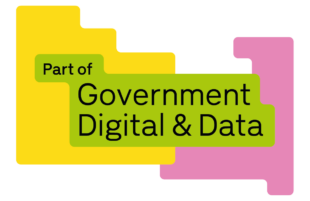
In December, the Department for International Trade (DIT) released the new future UK tariff as an openly licensed and machine-readable data set for the first time. The new service represents the best of collaboration between DDaT and policy colleagues across government, all while dealing with the impact of COVID-19 on our personal and professional lives.
Building upon the UK Global Tariff
In May, the DDaT team supported the publication of the UK Global Tariff (UKGT), which we wrote about in an earlier blog. The service helps users find and compare the tariffs and the data is available as an open data set, in both a spreadsheet format and available for querying as an API. Alongside it is open metadata that users can use to find out when we update the data.
This was well received and had great feedback, but it was only the first step. The UK Global Tariff is the base rate that importers will pay when they don’t have access to preferential tariffs. This is just one part of the UK’s fully independent trade policy. To help traders understand the full tariff, it was necessary to include information on suspensions, free trade agreements, trade defences, reliefs, autonomous quotas and import controls.
Our teams have worked closely with policy colleagues so we could understand how to represent their policy intent in data. We worked with over 30 different policy teams from 11 government departments, compared to just one department for the publication of the UK Global Tariff. We’re very thankful for all the support they’ve given. We’ve also relied heavily on our technology colleagues in DIT who leapt into action in March to provide the department with tools for remote-working and communication that allowed us to work this way.
Like many others we have been affected by the resurgence of COVID-19 which has affected us and our families. We’ve also faced challenges that we’re more used to seeing, such as quality assurance and data quality more broadly. Despite these obstacles we have worked with our colleagues to deliver a complete tariff.
What's new in the full tariff data set
This full data set has many more components. In addition to the rates in the UKGT measures, the full data set includes commodity codes, many more items of reference data, and legislated preferential rates.
Today we have published this data set on data.gov.uk in a machine-readable format alongside services that provide a guided journey for individual traders. This is just the tariff, so it doesn’t include VAT, Excise or information about quota balances which is available from HMRC. We have also developed a service which helps businesses find the correct commodity code for the product they’re importing to the UK which is being released into private beta.
There is still more to do with the data. We’re still learning about our users, so we’ve published the data in formats we think are most widely accessible. But we think that some users, particularly those who run services based on this data, will need a more granular view and features. This will help users keep their own databases updated with tariff changes.
Over the coming months we will be conducting user research on what we could do to make this data more user-friendly. As tariff data can be complicated, we are also working with our content colleagues to help explain the concepts behind the data in detail. All of this will help us progress to become the leading government for trade data.
If you would be happy to engage with our research work, we’d really like to hear about what you’re doing with tariff data, so please contact us.
Read about other projects that the data team works on at DIT.

